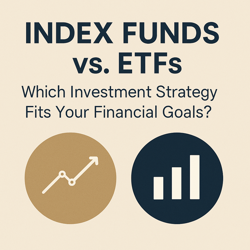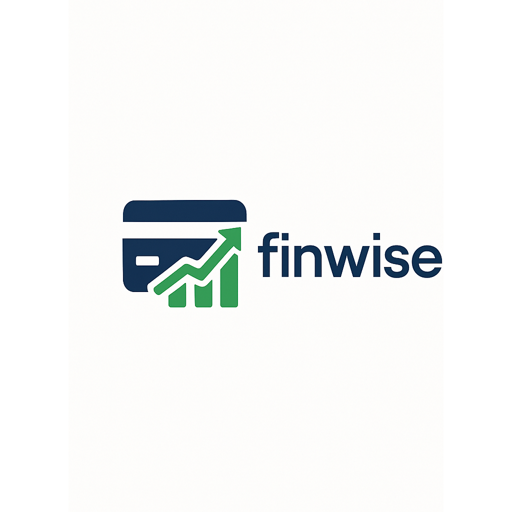Index Funds vs. ETFs: Which Investment Strategy Fits Your Financial Goals?
When it comes to passive investing in the U.S. market, two standout options dominate: Index Funds and Exchange-Traded Funds (ETFs). Both provide a cost-effective, diversified approach to investing, but each caters to slightly different financial needs and investor profiles. While they share similarities—such as low expense ratios and broad market exposure—the differences can significantly impact how your investments grow over time.
Index Funds are typically ideal for long-term, hands-off investors who prefer a “set-it-and-forget-it” approach. They are purchased at the end-of-day NAV (Net Asset Value) and often come with automatic investment features—perfect for retirement portfolios.
ETFs, on the other hand, offer greater flexibility. They trade like stocks throughout the day and are excellent for investors who want more control over pricing, trading strategies, or tax optimization. ETFs are also popular among those using robo-advisors or DIY portfolio strategies.
Understanding your risk tolerance, investment horizon, and personal preferences will guide you toward the right choice. Whether you’re focused on ease and automation or flexibility and tax efficiency, aligning your investment vehicle with your goals is key to maximizing returns while minimizing stress.

Top Advantages of Choosing Between Index Funds and ETFs
1. Diversification Across Multiple Asset Classes
Both Index Funds and ETFs offer built-in diversification by tracking a wide range of stocks or bonds. This reduces risk by spreading your investment across various sectors or companies. Whether it’s the S&P 500 or a niche bond market, you’re investing in a slice of the broader economy with just one purchase.
2. Low Expense Ratios for Greater Returns
One of the most appealing benefits is cost. ETFs and Index Funds are known for their low fees, often under 0.10% annually. Lower expenses mean more of your money stays invested and compounds over time—significantly boosting your long-term returns compared to actively managed funds.
3. Tax Efficiency for Smarter Gains
ETFs generally offer superior tax efficiency due to their in-kind creation and redemption process. This helps reduce capital gains distributions. For high-net-worth individuals or tax-conscious investors, this can be a strategic advantage over traditional index funds.
Minor Limitations That Shouldn’t Deter Long-Term Investors
1. ETFs May Be Overwhelming for Beginners
While ETFs offer flexibility, their intraday trading nature can be confusing for novice investors. The need to understand bid-ask spreads, premium/discount pricing, and market timing may complicate the investment process for those new to investing.
2. Minimum Investment Requirements in Index Funds
Many Index Funds have minimum investment requirements—often $1,000 or more—which can be a barrier for some entry-level investors. In contrast, ETFs can be purchased in individual shares, sometimes for under $100, making them more accessible initially.
How to Get Started with Index Funds or ETFs
Getting started with either investment vehicle is straightforward. You don’t need a financial advisor or years of experience to begin. Most major brokerages offer both options, and the account setup process is typically quick and easy. Knowing your goals—whether it’s retirement, wealth accumulation, or income—will guide your choice.
You can begin by researching the best-rated funds, understanding the underlying indexes they track, and comparing fees and performance history. Using investment platforms like Vanguard, Fidelity, Schwab, or Robinhood will give you access to thousands of funds with user-friendly tools and low or no trading fees.
5 Easy Steps to Start Investing
Choose a Brokerage Platform – Sign up with trusted platforms like Vanguard, Schwab, or Fidelity.
Define Your Financial Goals – Understand whether you want growth, income, or both.
Compare Index Funds vs. ETFs – Assess liquidity, tax efficiency, and cost.
Start Small and Consistent – Begin with amounts you can afford and invest regularly.
Monitor and Rebalance Annually – Review performance and adjust allocation as needed.
Choosing between Index Funds and ETFs is not about picking a “better” product but rather identifying what aligns with your unique financial goals. Index Funds offer simplicity, discipline, and ease of use—especially appealing for long-term investors building retirement wealth. ETFs, on the other hand, provide flexibility, tax efficiency, and real-time trading, making them a strong choice for those seeking more control and strategic advantage.
Whichever path you choose, both options help you grow wealth passively through diversified, low-cost investing. The key is consistency. Regular contributions, a clear strategy, and long-term commitment will yield greater benefits than trying to time the market or chase performance.
Ultimately, whether you go with Index Funds or ETFs, you’re taking a smart step toward financial freedom—and that’s a win in any portfolio.
Our Post

High Interest Rates, Credit Cards and the U.S. Consumer: What to Know in 2025
The Note: How Decelerating U.S. Economic Growth Affects Using Consumer Credit


